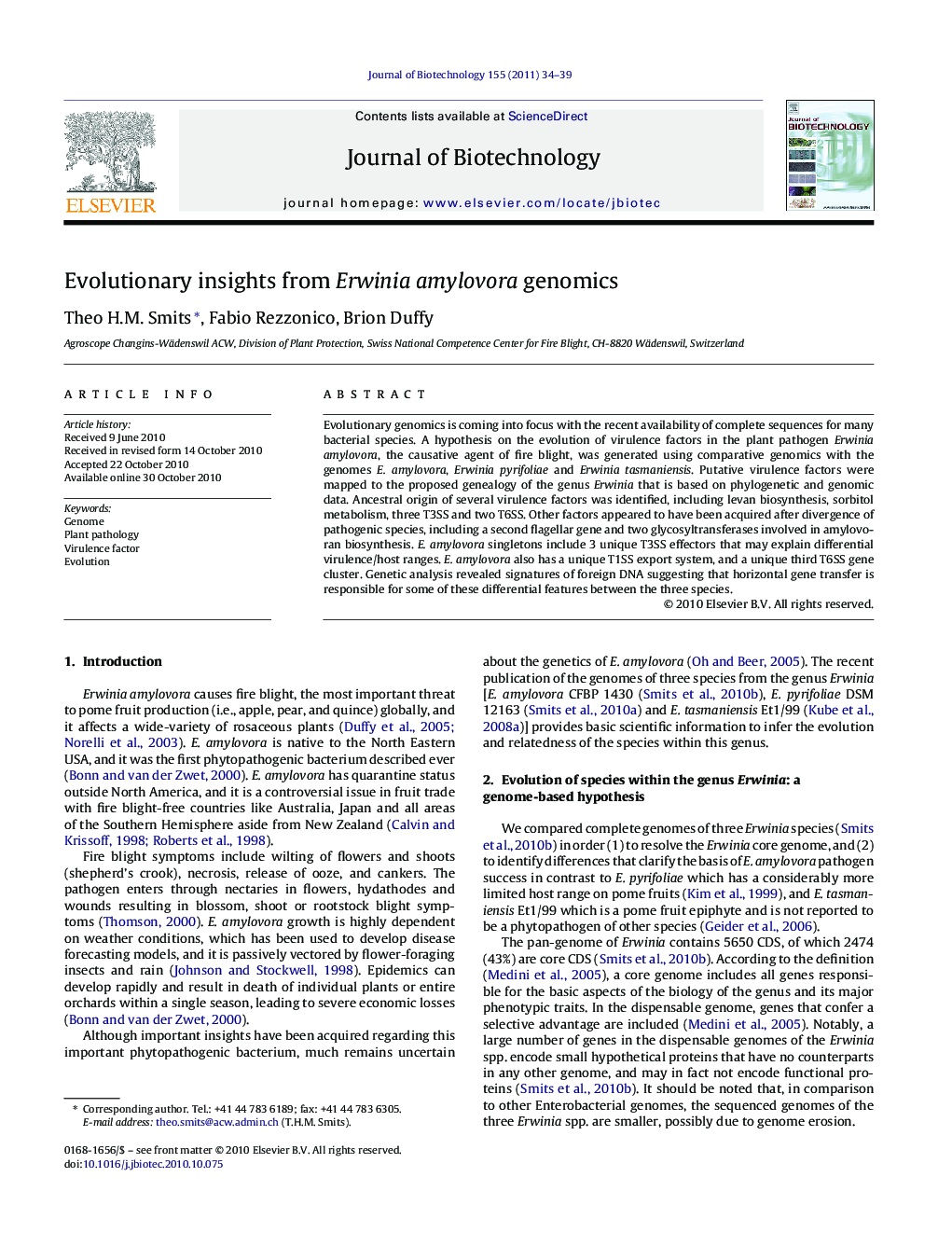| Article ID | Journal | Published Year | Pages | File Type |
|---|---|---|---|---|
| 23747 | Journal of Biotechnology | 2011 | 6 Pages |
Evolutionary genomics is coming into focus with the recent availability of complete sequences for many bacterial species. A hypothesis on the evolution of virulence factors in the plant pathogen Erwinia amylovora, the causative agent of fire blight, was generated using comparative genomics with the genomes E. amylovora, Erwinia pyrifoliae and Erwinia tasmaniensis. Putative virulence factors were mapped to the proposed genealogy of the genus Erwinia that is based on phylogenetic and genomic data. Ancestral origin of several virulence factors was identified, including levan biosynthesis, sorbitol metabolism, three T3SS and two T6SS. Other factors appeared to have been acquired after divergence of pathogenic species, including a second flagellar gene and two glycosyltransferases involved in amylovoran biosynthesis. E. amylovora singletons include 3 unique T3SS effectors that may explain differential virulence/host ranges. E. amylovora also has a unique T1SS export system, and a unique third T6SS gene cluster. Genetic analysis revealed signatures of foreign DNA suggesting that horizontal gene transfer is responsible for some of these differential features between the three species.
